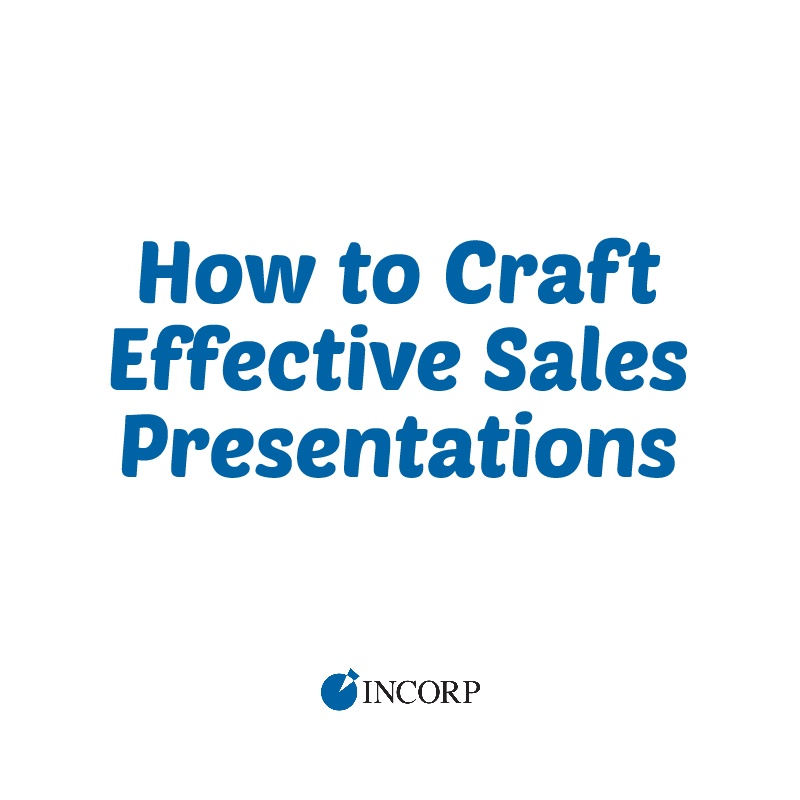Crafting Effective Sales Presentations
Learning how to develop an effective sales presentation is as much art as science, but certain basic principles apply whether you’re selling widgets, web services, or anything else. First, calling it a sales “pitch” will put you in the wrong frame of mind because a pitch in baseball is a one-way motion from the pitcher to the batter. An effective sales presentation is more like a game of catch, with ideas and information being passed back and forth between the players. Here are some techniques that should help you win the all-important sales game.
-
Set Yourself Up for Success
You already know your business and your product, but if you’re uncertain about any aspect of your company, that’s surely going to be the one thing your prospect asks about. Take some time to make sure you’re prepared to answer any question. Then:
Find out everything you can about your prospect, their industry, and their main competitors. If you are selling to a company, research their website, social media sites, and online reviews. For a public company, review their SEC filings and annual reports. If selling to an individual, see if they have a Facebook or LinkedIn page that would give you background information.
In either case, try to define a need that you can fill or a problem you can solve. You may be selling the best cupcakes in the world, but if the customer isn't hungry, he won't buy.
If possible, get a referral from a mutual acquaintance before setting up the appointment, to turn your prospect from a "cold" to a "warm" contact. If your acquaintance can introduce you, either by email or over the phone, that would be even better.
-
Talk to the Boss
Make sure you’re talking to the decision-maker. There are few things as frustrating as making a wonderful 30-minute presentation, only to discover that you were presenting to someone who isn’t authorized to buy anything.
Set your goals before you design your presentation. Do you want to get a 12-month contract? Permission to make a presentation to the board? Once you're clear on your goal, you can begin with the end in mind.
-
What to Include
When setting up a household budget, the first step is recording all your expenses to see where your money goes. The same principle applies when trying to budget your time wisely. Review your calendar and your to-do lists to see where your time is going. Then:
It makes sense to develop a template with basic facts about your company and your product, but each presentation should be customized to fit the prospect you'll be meeting. Using the research you've already done, point out how you can fill their particular need. If you've helped someone else in a similar situation, share that with them as well.
Instead of discussing the features of your product (speed, ease of use, durability, etc.) point out the benefits: how it will cut costs, speed up production time, or improve communication.
Address potential objections beforehand. If you expect to be questioned about price, include an element in your presentation that shows how quickly your product will pay for itself with cost savings. If you're new in town and think that might raise a red flag, include details about your long, successful history in another town.
-
Stand Out and Make A Good First Impression
Find out how much time you'll have. If your prospect only has 10 minutes between meetings, do a brief "elevator pitch" and set an appointment for a more convenient time.
Be yourself! Rather than copying someone else's style, find a way of delivering your message that lets your personality shine through. This will help you develop a sincere connection with your prospect, which will make them more likely to believe what you say.
Yes, you’re eager to get on with your presentation, but don’t forget that listening to what the other person is saying will produce better results than delivering a monolog. Start with a question, respond to it, and let the discussion flow from there. Don’t be afraid to throw out the script.
Keep it clear and concise. Present the basics of what you’re offering without jargon, long-winded explanations, or too much detail. The goal should be to pique their interest so they’ll ask for more information, rather than talking so long that they become bored and stop listening. If making a PowerPoint presentation, use bullet points to highlight the main ideas and focus their attention. Then add a brief description of each point.
-
Ask for Feedback
Ask for feedback as you go along, with questions like, "Would that help your company?" or "Is that something you'd be interested in?" Then take as much time as necessary to respond.
Use testimonials from other clients if they're available. Don't forget the call to action. Ask for the sale! If the prospect isn't ready to buy yet, set up a time for a follow-up appointment. Once you've started the process of offloading a few small tasks, keep going and see how much time you can free up by adding more jobs to the list.
By following the rules of the game, you and your prospect will both come out winners.
Stay in the know!
Join our newsletter for special offers.
 Find out how much time you'll have. If your prospect only has 10 minutes between meetings, do a brief "elevator pitch" and set an appointment for a more convenient time.
Find out how much time you'll have. If your prospect only has 10 minutes between meetings, do a brief "elevator pitch" and set an appointment for a more convenient time.
